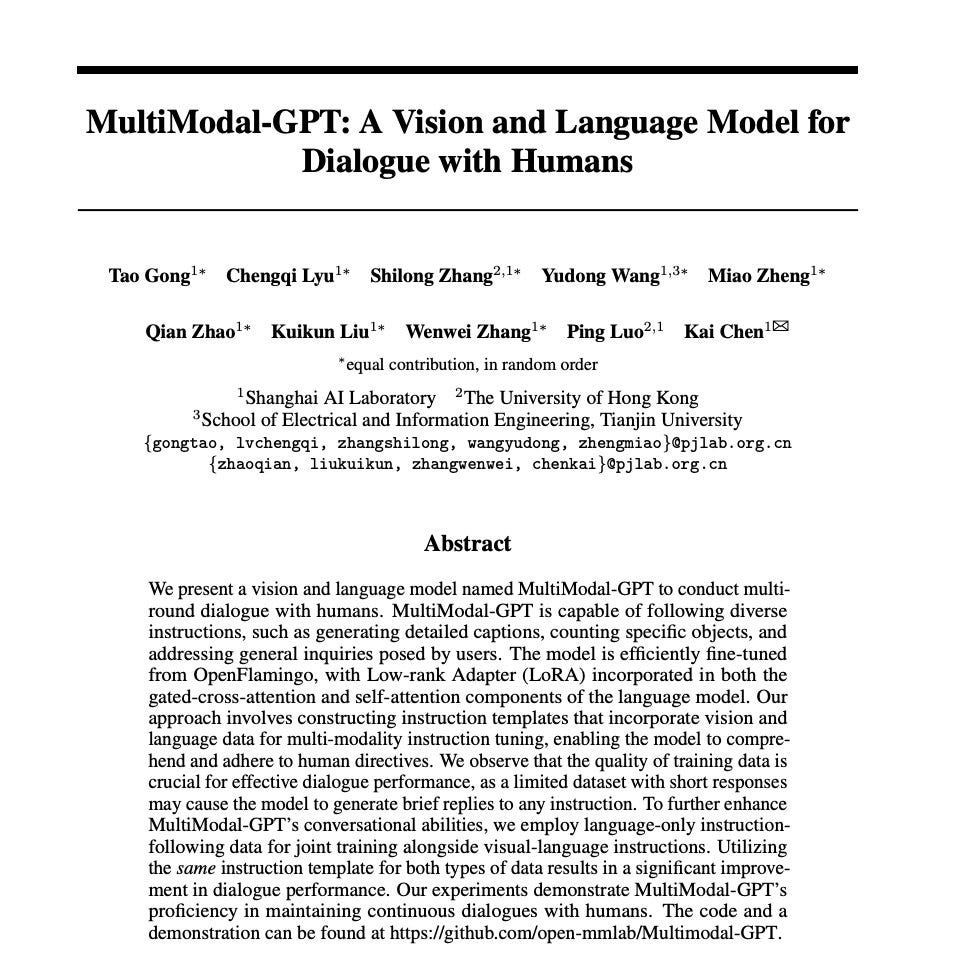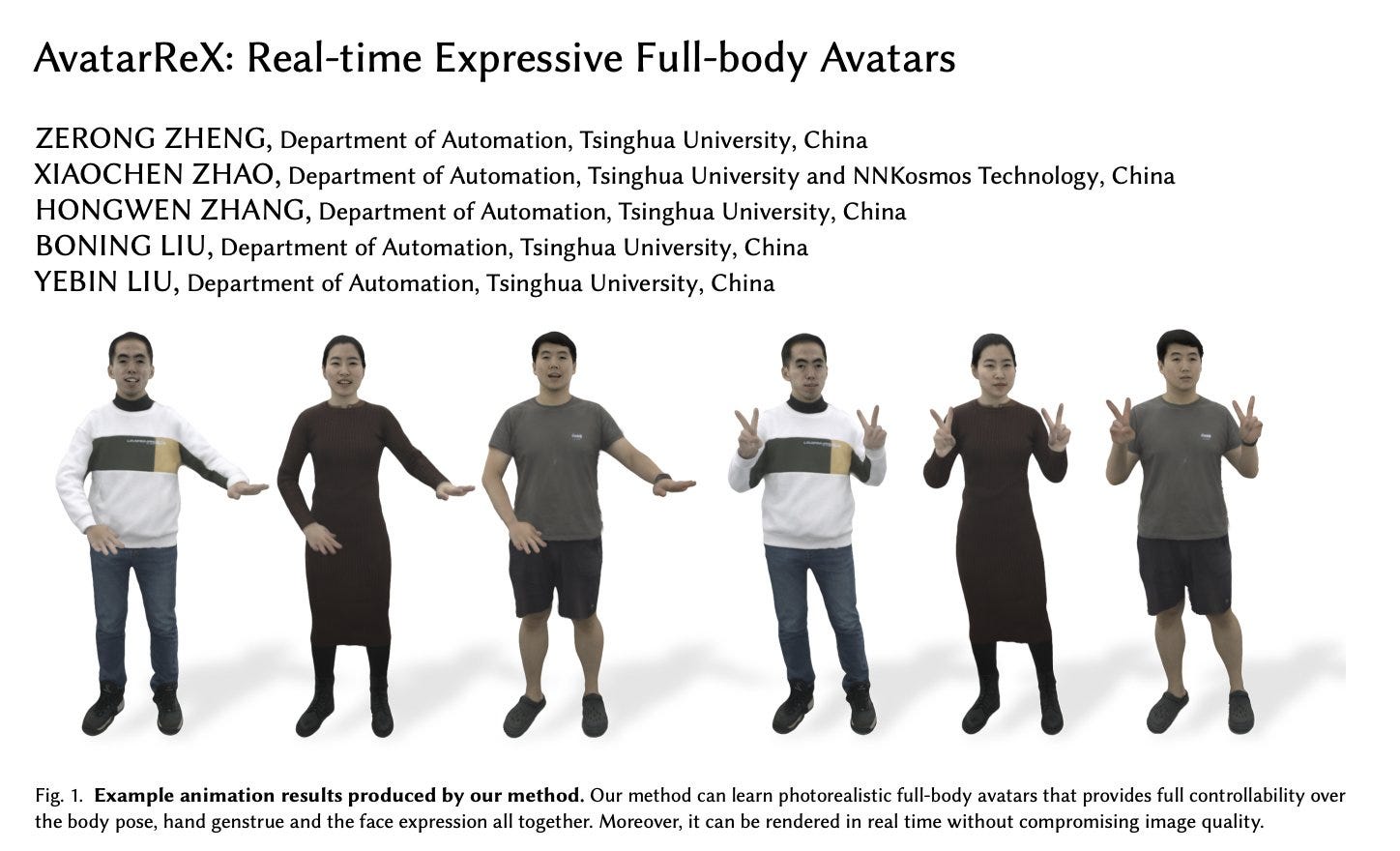Top AI news stories
Wendy’s, Google Train Next-Generation Order Taker: an AI Chatbot
With Seed Funding Secured, AI Detection Tool GPTZero Launches New Browser Plugin
Here are the top skills you will need for an ‘A.I.-powered future,’ according to new Microsoft data
IBM intros a slew of new AI services, including generative models
Top AI papers
Multi-Space Neural Radiance Fields
abs: https://arxiv.org/abs/2305.04268
paper page: https://huggingface.co/papers/2305.04268…
project page: https://zx-yin.github.io/msnerf/
abstract: Existing Neural Radiance Fields (NeRF) methods suffer from the existence of reflective objects, often resulting in blurry or distorted rendering. Instead of calculating a single radiance field, we propose a multi-space neural radiance field (MS-NeRF) that represents the scene using a group of feature fields in parallel sub-spaces, which leads to a better understanding of the neural network toward the existence of reflective and refractive objects. Our multi-space scheme works as an enhancement to existing NeRF methods, with only small computational overheads needed for training and inferring the extra-space outputs. We demonstrate the superiority and compatibility of our approach using three representative NeRF-based models, i.e., NeRF, Mip-NeRF, and Mip-NeRF 360. Comparisons are performed on a novelly constructed dataset consisting of 25 synthetic scenes and 7 real captured scenes with complex reflection and refraction, all having 360-degree viewpoints. Extensive experiments show that our approach significantly outperforms the existing single-space NeRF methods for rendering high-quality scenes concerned with complex light paths through mirror-like objects.
MultiModal-GPT: A Vision and Language Model for Dialogue with Humans
abs: https://arxiv.org/abs/2305.04790
paper page: https://huggingface.co/papers/2305.04790
github: https://github.com/open-mmlab/Multimodal-GPT
abstract: We present a vision and language model named MultiModal-GPT to conduct multi-round dialogue with humans. MultiModal-GPT can follow various instructions from humans, such as generating a detailed caption, counting the number of interested objects, and answering general questions from users. MultiModal-GPT is parameter-efficiently fine-tuned from OpenFlamingo, with Low-rank Adapter (LoRA) added both in the cross-attention part and the self-attention part of the language model. We first construct instruction templates with vision and language data for multi-modality instruction tuning to make the model understand and follow human instructions. We find the quality of training data is vital for the dialogue performance, where few data containing short answers can lead the model to respond shortly to any instructions. To further enhance the ability to chat with humans of the MultiModal-GPT, we utilize language-only instruction-following data to train the MultiModal-GPT jointly. The joint training of language-only and visual-language instructions with the \emph{same} instruction template effectively improves dialogue performance. Various demos show the ability of continuous dialogue of MultiModal-GPT with humans.
Vcc: Scaling Transformers to 128K Tokens or More by Prioritizing Important Tokens
abs: https://arxiv.org/abs/2305.04241
paper page: https://huggingface.co/papers/2305.04241
abstract: Transformer models are foundational to natural language processing (NLP) and computer vision. Despite various recent works devoted to reducing the quadratic cost of such models (as a function of the sequence length n), dealing with ultra long sequences efficiently (e.g., with more than 16K tokens) remains challenging. Applications such as answering questions based on an entire book or summarizing a scientific article are inefficient or infeasible. In this paper, we propose to significantly reduce the dependency of a Transformer model's complexity on n, by compressing the input into a representation whose size r is independent of n at each layer. Specifically, by exploiting the fact that in many tasks, only a small subset of special tokens (we call VIP-tokens) are most relevant to the final prediction, we propose a VIP-token centric compression (Vcc) scheme which selectively compresses the input sequence based on their impact on approximating the representation of these VIP-tokens. Compared with competitive baselines, the proposed algorithm not only is efficient (achieving more than 3× efficiency improvement compared to baselines on 4K and 16K lengths), but also achieves competitive or better performance on a large number of tasks. Further, we show that our algorithm can be scaled to 128K tokens (or more) while consistently offering accuracy improvement.
Language Models Don't Always Say What They Think: Unfaithful Explanations in Chain-of-Thought Prompting
abs: https://arxiv.org/abs/2305.04388
paper pages: https://huggingface.co/papers/2305.04388
abstract: Large Language Models (LLMs) can achieve strong performance on many tasks by producing step-by-step reasoning before giving a final output, often referred to as chain-of-thought reasoning (CoT). It is tempting to interpret these CoT explanations as the LLM's process for solving a task. However, we find that CoT explanations can systematically misrepresent the true reason for a model's prediction. We demonstrate that CoT explanations can be heavily influenced by adding biasing features to model inputs -- e.g., by reordering the multiple-choice options in a few-shot prompt to make the answer always "(A)" -- which models systematically fail to mention in their explanations. When we bias models toward incorrect answers, they frequently generate CoT explanations supporting those answers. This causes accuracy to drop by as much as 36% on a suite of 13 tasks from BIG-Bench Hard, when testing with GPT-3.5 from OpenAI and Claude 1.0 from Anthropic. On a social-bias task, model explanations justify giving answers in line with stereotypes without mentioning the influence of these social biases. Our findings indicate that CoT explanations can be plausible yet misleading, which risks increasing our trust in LLMs without guaranteeing their safety. CoT is promising for explainability, but our results highlight the need for targeted efforts to evaluate and improve explanation faithfulness.
AvatarReX: Real-time Expressive Full-body Avatars
abs: https://arxiv.org/abs/2305.04789
paper page: https://huggingface.co/papers/2305.04789
abstract: We present AvatarReX, a new method for learning NeRF-based full-body avatars from video data. The learnt avatar not only provides expressive control of the body, hands and the face together, but also supports real-time animation and rendering. To this end, we propose a compositional avatar representation, where the body, hands and the face are separately modeled in a way that the structural prior from parametric mesh templates is properly utilized without compromising representation flexibility. Furthermore, we disentangle the geometry and appearance for each part. With these technical designs, we propose a dedicated deferred rendering pipeline, which can be executed in real-time framerate to synthesize high-quality free-view images. The disentanglement of geometry and appearance also allows us to design a two-pass training strategy that combines volume rendering and surface rendering for network training. In this way, patch-level supervision can be applied to force the network to learn sharp appearance details on the basis of geometry estimation. Overall, our method enables automatic construction of expressive full-body avatars with real-time rendering capability, and can generate photo-realistic images with dynamic details for novel body motions and facial expressions.








